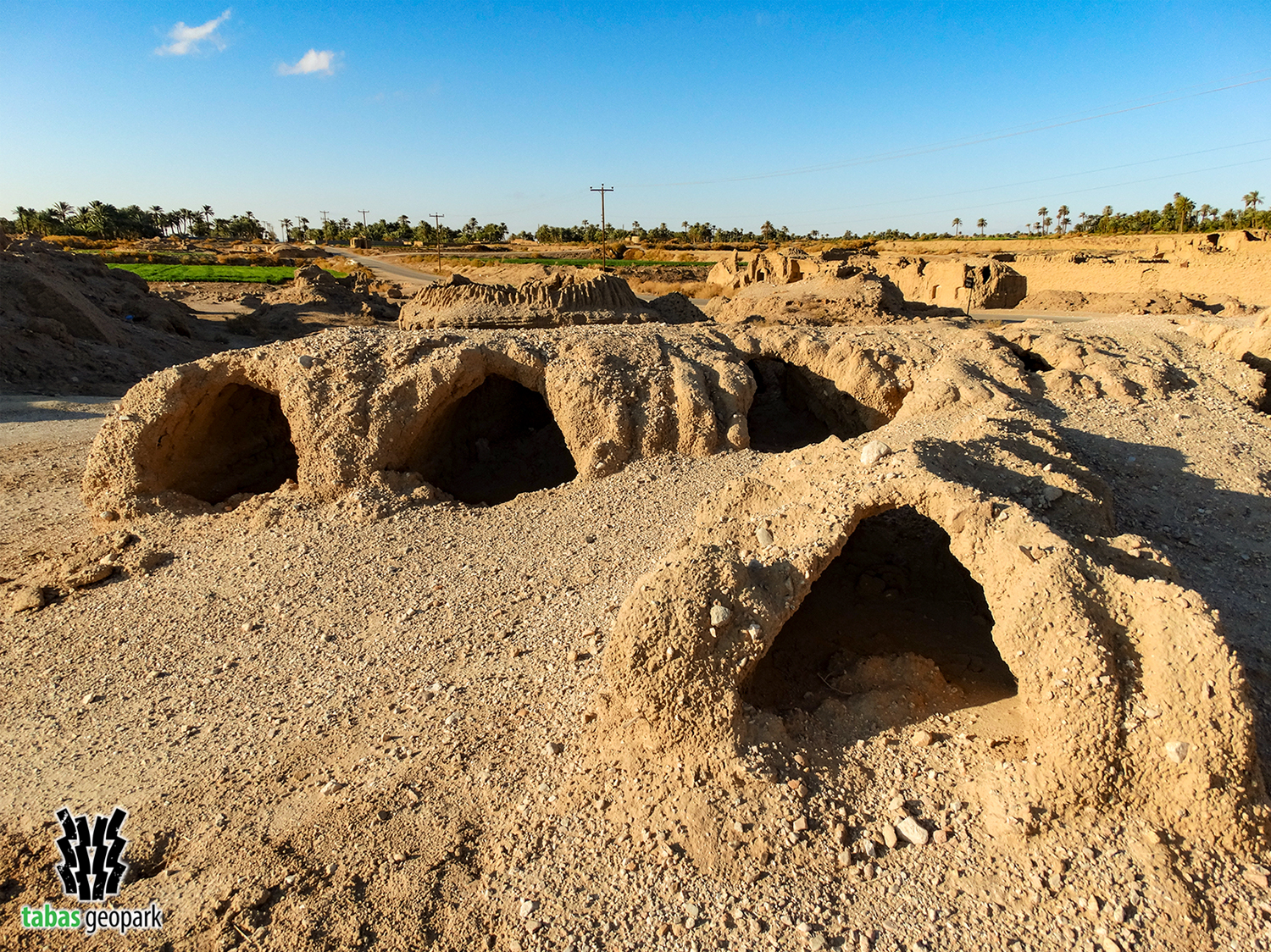History and Importance
Korite with a distance of 17 km south of Tabas is one of the most important cultural-historical sites of Tabas Geopark, providing valuable evidence of the remnants of the Tabas earthquake and the historical texture of this area. The history of this village dates back to pre-Islamic times. One of the most unique historical monuments of Korit is its Sepordani Graves geosite, which is called the Gurhaye Espordani in the local language. This cemetery, which is located next to the water reservoir and the old Grand Mosque of Korit, has a very interesting story of the burial tradition of the dead of this land or caravans that passed through this area in the past. Unlike other Muslim cemeteries in which the dead is buried in the ground, in this cemetery the bodies of the dead were placed on the ground and a small tomb or chamber was built on it with bricks and mud. These cemeteries are rooted in the religion and tradition of Muslims who willed to transfer their bodies to holy cities such as Mashhad, Karbala, Najaf, etc. after their death. Besides, as caravans travelled by horses, camels, or on foot for long distances and faced numerous problems along the way, some people died during the journey due to various factors and willed to be transferred to their own cities or holy places for burial. Therefore, the dead were buried in special graves known as Gurhaye Espordani due to the lack of facilities in the past and in order to prevent the decomposition and decay of corpses and the fact that it was not possible to carry them. After the body was decomposed, the bones of the dead person were placed in a bag and transported to the destination. As some of the heirs of these people could not afford to carry the bodies to the designated destination or they also died over time, some of these graves are still found in the old cemetery of Korit.
This type of burial can have different reasons: First, because the body is on the ground, it is more exposed to air and oxidation and decomposes sooner. Second, it is much easier to destroy these types of graves on the ground. Third, if the dead bodies were buried in the ground, they could have been lost. In addition, historical evidence and memories of the people of Tabas show that there were Sepordani graves even in the city of Tabas and near the Holy Shrine. This indicates that this type of burial method is rooted in the culture and religion of the people of this region of Iran and this type of cemetery can exist in other parts of Iran.
– The scientific resources are available in the management of Tabas Geopark.
The use of this article is unrestricted by mentioning the source.

